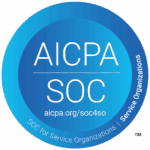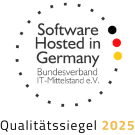The language of payments is changing. And for the better. ISO 20022 – the newest global payments standard is coming in. It creates a common language for all payments. ISO 20022 allows higher quality payment data transfer between financial institutions. What this means is faster and more secure payments for all. The new standard will come into effect in Europe from November 2022. It will replace earlier standards, such as SWIFT MT and ISO 15022, which have been in use so far. By 2025, it will become the global standard for all high-value payment transfers.
What is ISO 20022?
Financial institutions, such as banks, exchange electronic payment data using a message framework. SWIFT is one such popular messaging framework that is in use. This is similar to the SWIFT messaging standard, but more improved. When you make a domestic or cross-border payment, your bank sends the payment data in a specific format. This format might differ from the one used by the recipient’s bank, leading to missing or mismatched details and payment failures. This can have huge consequences on business, especially for high-value international payments, where timely payment is critical. The adoption of ISO 20022 tackles these issues head-on with an aim to transform global payments.
What does ISO 20022 do?
ISO 20022 enables rich, more granular data to move in payment messages. This improves the quality of payment data. Better quality and accuracy of the payment data means better payments. It also enables banks to process payments faster and more efficiently. Payment data flows seamlessly from payer to beneficiary with full data content. The high quality of data boosts transparency and efficiency in payments. Richer data also means improved security and better compliance. All in all, high-value payment transfers will become easier, faster, and more secure.
Why the Need for ISO 20022?
Speed is key to today’s business. Faster payments can make a big difference to all. Cross-border payments in Europe are fragmented and vary based on local standards and practices. When institutions in different regions use different standards, syncing and streamlining payments can be tough. There is also a lack of interoperability, which hinders data automation. Miscommunication between banks also increases the risks when transferring big sums of money. A common, global standard makes it much easier for different entities to communicate using a single payment language. Hence, the adoption of ISO 20022 payments is necessary.
How does business benefit from ISO 20022?
Quality data means better payments for all. The main advantage of ISO 20022 is that it gives access to rich, high-quality data. Access to clear and quality data helps to improve payments. It aids in data-driven decision making. It becomes possible to run stringent checks on money laundering and other financial crimes. This makes fraud prevention measures more effective.
Greater transparency and availability of data make it easier to reconcile payments, thus lowering costs and saving time. It also helps to improve the customer experience. Better quality data helps to support and improve end-to-end automation. Machines can use this data more effectively and enhance straight-through processing rates. Other benefits include improved compliance and greater innovation for new services. ISO 20022 uses XML technology which is well supported and makes integration with other systems more efficient. Globally, the adoption of and migration to ISO 20022 is underway, with almost 200 market-driven initiatives adopting it for payments transformation.
History in Europe
In Europe, this payment was originally introduced as a pan-EU standard along with SEPA. But earlier infrastructure lacked interoperability among the various domestic payment systems, which led to delays of up to five days to settle SEPA payments. But a decision was taken in 2014 to use ISO 20022 for SEPA payments, as a part of global efforts to standardize payments and allow richer data exchange. In Europe, the deadline for the payment adoption is November 2022. SWIFT and the European Central Bank have both announced go-live dates for 2022. ISO predicts by 2025, the new standard will support 80 percent of transaction volumes and 87 percent of transaction value worldwide.
Are there any challenges facing ISO 20022 adoption?
Great though it sounds, standardization is not always easy. The payments ecosystem in Europe is fragmented. How each country, payment scheme, or even each bank uses the new framework can vary. But it is clear that banks and other financial players have to adopt ISO 20022 if they are to remain a part of the global payments landscape. At this point, it would be safe to say that ISO 20022 is indeed the future of payments communication. We will have to keep watch to see how this transforms global payments forever.
To know more about ISO 20022, you can head over here.
Jose Augustine is the Chief Business Development Officer at Novalnet with extensive experience in European payment industry and a knowledge powerhouse.












